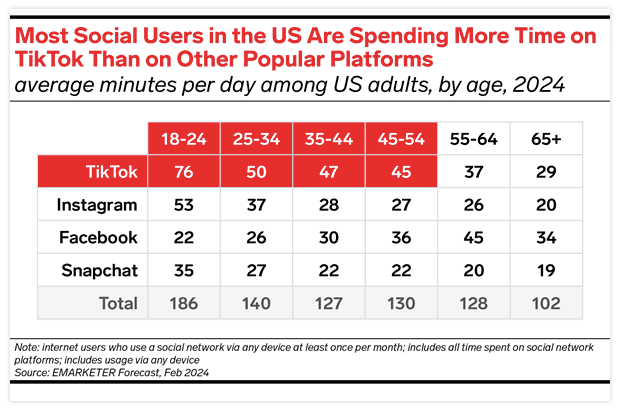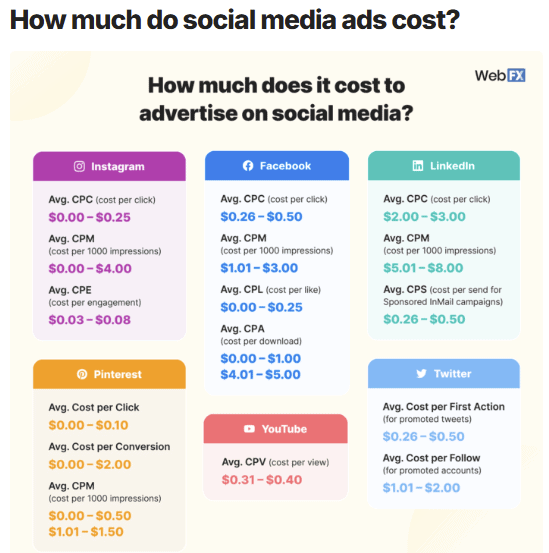For months, you’ve been preparing and strategising on how to make the best for your brand through social media campaigns. Your marketing team has put in all the work on your social media campaigns, but it seems like you’re not getting it right. Every day, you’re restless if you want to tap into the social commerce and drive sales for your brand.
Image source
Here is your help. This article shares strategies you can use to run your social media campaigns effectively, acquire leads, and convert them into customers, driving success for your brand.
What is a social media campaign?
These are a series of marketing efforts across different social media platforms that marketing teams use to achieve a set goal for the business.
Why social media campaigns are important
- Increase brand awareness
- Engage and build loyalty with customers
- Increase customer engagement
Strategies to run a successful social media campaign
Define clear campaign goals and objectives
Know exactly what you want to achieve with your campaigns. Do you want to drive more awareness, build trust, generate leads, and drive product awareness?
Ensure the goals are specific and achievable within a given time range. Some questions you can use to guide your goal planning
- What are the biggest challenges our customers face?
- How does our brand help solve customers’ challenges?
For example, you can have a goal like’’ Get 200 new LinkedIn followers and 10 leads in 3 months’’
Identify and research your target audience
Know who you want to reach. Have a buyer persona for your target audience to know them better. Understand their online behaviours and how they engage brands on social media, especially your competitors. And also know where your customers are in their buyer journey.

Image source
You can also check out your target audience’s purchase history to give you insights into the products they want. It will make it easy for you to know what value to post on the social platforms to engage them.
Use social listening tools to know more about your target audience, what they say about your brand, and even your market competitors. Alongside a great product customization strategy, you run campaigns around the products your target audience cares about and wants. It will give you leverage on how you can run your campaigns and make them effective in achieving your marketing goals. These questions from their behavioural instincts can help:
- What types of content do your customers engage with the most?
- What motivates them to take action on social media platforms?
After speaking with Hanna Parkhots, a Data Collection Project Manager at Unidata, this was her advice on knowing your audience.
Success starts with knowing your audience on a fundamental level. Using social media statistics along with crowdsourced research, we identified large segments that responded characteristically to various content types. This extremely accurate segmentation improved our campaign engagement levels by as much as 40%. Customization of content to such distinct groups, either through interest, behavior, or demography, helps you create content that highly appeals to people while taking both interaction and conversion levels up.
Choose the right social media platforms
Where does your target audience like to hang out? What are their favourite platforms? Understanding your audience and the sites they mostly hang out is a game-changer for your social media campaigns. For example, research shows that most US Gen Z spend more time on TikTok per day.

Image source
You want to meet your customers where they’re mostly active and share content that connects, builds trust, and shows them the value you give to solve their challenges.
I spoke to Deepak Shukla, founder of Pearl Lemon PR, and these were his thoughts:
Social media isn’t about being ‘everywhere’, it’s about being obsessively consistent somewhere. I’ve seen startups tank because they posted mediocre stuff on five platforms instead of gold on one. I’d rather dominate LinkedIn for 15 minutes a day than burn 5 hours trying to be a Twitter meme lord. At Pearl Lemon, we’ve driven leads worth hundreds of thousands of pounds just from focused, human-feeling updates like typos, bad lighting, and all. Authentic beats aesthetic every time.
Set a realistic budget for paid promotion
Allocate money for your social media campaigns. It will be easy to run your campaigns if you have enough budget for it. For example, well-financed campaigns for your eCommerce business can drive massive traffic and lead to conversions through the campaigns. Here are the average costs of social media advertising.

Image source
Develop a content strategy and content calendar
Have a content strategy for your campaigns. What content types are you using to run your social media campaigns? You can also do a competitive analysis of your competitors, the content they create, and how it has been performing for their business. With such data, you can create better content and optimize it for high engagement. You can use hashtags that your customers use in their content search to increase content visibility. Hear what Nat from Breadnbeyond, an explainer video company, says.
Honestly, the biggest shift for me was realizing social media campaigns aren’t about going viral. They’re about showing up consistently with content people actually care about.
For our video production company, I stopped obsessing over polished, promotional posts and started sharing real behind-the-scenes moments, client wins, and even production mistakes we learned from. That authenticity built way more trust than any fancy campaign ever did.
The other thing that’s been huge? Actually engaging with our audience like they’re humans, not metrics. I spend time every day responding to comments, jumping into DMs, and supporting other creators in our space.
It sounds simple, but that genuine interaction has led to more client referrals and partnerships than any paid ad campaign we’ve run. Social media works when you treat it like relationship-building, not broadcasting.
Create engaging and platform-specific content
Not all social media sites favour the same content. LinkedIn is more professional, and TikTok fans love short video content. Create content that aligns with each social media platform to attract a larger portion of your target audience to your content.
Before you start content production, understand how each platform works and focus on creating content that aligns with the target audience that uses the platform. You can create different content types like:
- Videos
- Memes
- User-generated content
- Graphics, images
- Text content
Here is an example of a social media campaign for Monday on Instagram

Image source
My talk with Matt Bowman, CEO & Founder of Thrive Internet Marketing Agency, supports this.
The most effective strategy for running successful social media campaigns is creating platform-specific content adapted to each channel’s unique audience behavior, rather than posting identical content across all platforms. The implementation involves analyzing what content performs best on each platform, then creating native content designed specifically for those environments.
Our LinkedIn content focuses on business insights, industry analysis, and professional development with longer-form posts and article shares, while Instagram emphasizes visual storytelling, behind-the-scenes glimpses, and quick tips using stories and reels. This platform-specific approach generates 3x higher engagement compared to our previous cross-posting strategy.
The campaign success factor involves a consistent brand voice across platforms while adapting content format, tone, and topics to match platform cultures. Our VP ensures messaging consistency while empowering platform-specific creativity—the same client success story becomes a detailed case study on LinkedIn, a visual before-and-after on Instagram, and a quick tip thread on Twitter, maintaining brand consistency while honoring each platform’s content expectations.
Collaborate with influencers or brand partners if applicable
People trust other people. Partnering with influencers whom people trust in the market can drive more awareness and build trust with leads for your campaigns. Collaborate with influencers who align with your business vision to draw more of your target audience to your brand.
Schedule and publish content consistently
Be consistent across the different social media sites. Post different content types that the target audience loves. Engage with your audience through comments and messages. Before target customers can trust the brand, they need to see its value consistently. The best way to give that is to provide them with the value through sharing valuable content consistently.
Create and publish authentic behind-the-scenes stories to build trust. Storytelling humanizes your brand, encourages lead engagement, and creates a lasting impact on your target audience that builds loyalty and trust.
I spoke to Joosep Seitam, Co-Founder of SocialPlug, and this is what he said:
One key strategy behind our most successful social media campaigns is data-driven storytelling. Instead of relying on trends alone, we analyze what emotional triggers drive engagement in each niche. For example, when managing a campaign for a lifestyle brand, we noticed posts evoking curiosity and transformation received 2.5x more saves and shares. We then crafted a campaign narrative around “before and after” stories, pairing real user experiences with bold visuals. The result was a 62% increase in organic reach and a 40% boost in follower growth within just four weeks.
Monitor campaign performance with analytics tools
Track and understand the performance of your campaigns. Adjust strategy based on data and insights. Track ROI and measure against initial goals to see how your campaigns are performing.
Monitoring how your campaigns perform helps focus your budget and energy on the channels that show high engagement and the content types that perform well.
If you’ve performed other marketing campaigns for social media before, you can tap into the data and performance reports of the campaigns to guide you on how to successfully run your campaigns.
I spoke to Leah Miller | Marketing Strategist at Versys Media:
A vital aspect is leveraging data analytics for performance tracking. By measuring key performance indicators such as engagement rates, click-through rates, and conversion metrics, we can iterate on the campaign to optimize results in real time. In a campaign we executed for a tech startup, refining our approach based on audience feedback led to a 40% increase in engagement during the second phase of the campaign.
Ready to scale your brand with social media campaigns?
If used well, social media is a strong and effective channel to build trust, engage leads, and convert them into customers. Having a great strategy for your social media campaigns will help you achieve your business goals through social media marketing.
Take action and implement these strategies for your marketing campaigns on social media.











